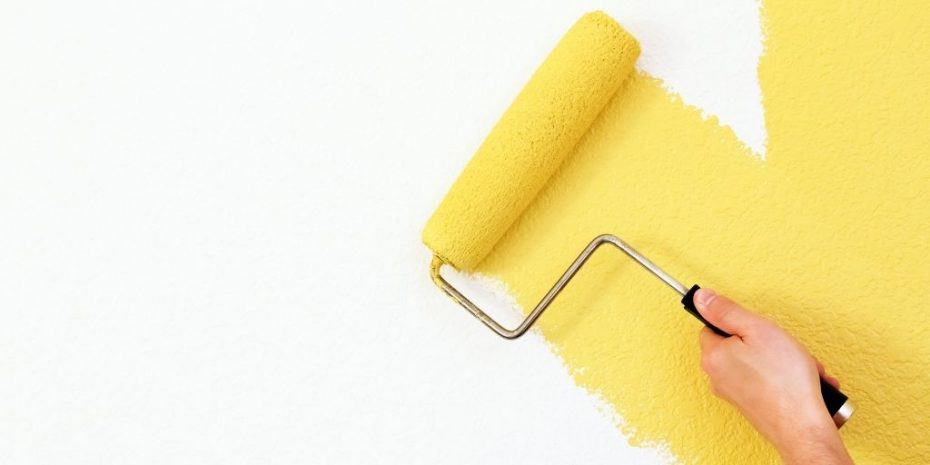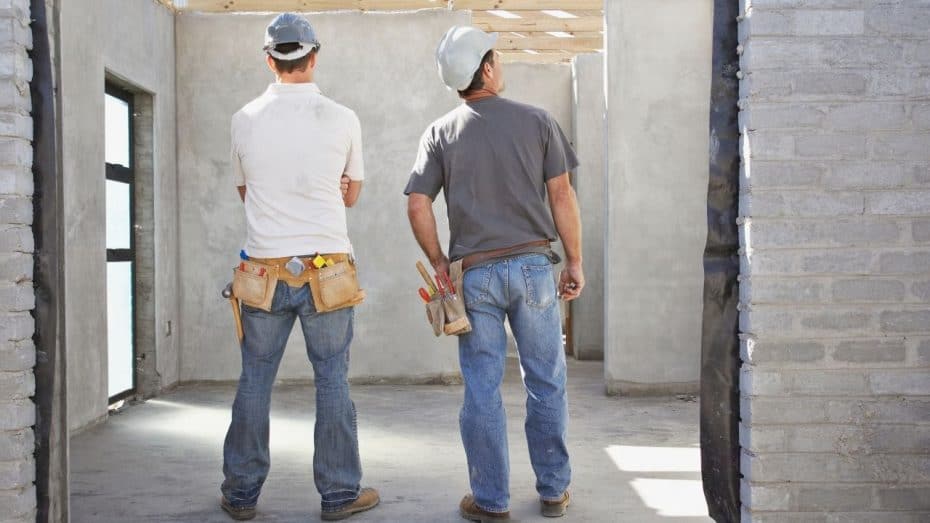What is House Flipping and Rehabbing?
The Basics of Flipping a Property
House flipping and rehabbing involves buying a piece of property, improving or restoring it, holding it for a time, then selling it for more than the price they purchased it for.
A house flipper will typically hold each property for a few months up to a year. In most cases, rehabbing does not involve significant alterations to the floor plan but may include major repairs to components such as roofing, electrical, and plumbing systems. Rehabbing generally goes beyond simple cosmetic repairs.
When investors speak of a “fix and flip,” they are usually referring to distressed properties they plan to purchase at a discount, rehab, and sell.

Though many individuals associate flipping solely with fix-and-flip homes, there are two main ways to flip a property:
- Buy a property in a rapidly increasing market, hold it for a few months until the value increases enough to make a profit, and sell it without making any improvements or repairs.
- Buy a distressed property, rehab it, and sell at a profit—the classic fix-and-flip.
The point is that rehabbing and flipping are often used interchangeably, but the two terms are not always synonymous; an investor can “flip” a home without undertaking any significant renovations or repairs in the right market. Conversely, an investor can “rehab” a property and not flip it, adding it instead to their portfolio as a rental unit.
The Difference Between a Rehab Property and a “Fixer-Upper”
Upgrading a property can be an effective way to turn a profit on an investment. Still, it is important to recognize the difference between a fixer-upper and a property that requires major rehabbing.
Fixer-uppers generally require cosmetic upgrades and repairs to bring it up to market value. For example, a fixer-upper may need new flooring, light fixtures, kitchen cabinets, and appliances before it is ready for sale.
A property in need of rehabbing needs extensive repairs to make it ready for occupancy. Rehabbing projects may include repairing water damage, shoring up structural elements, and bringing the property up to code.
One way to tell if a property is a fixer-upper or a rehabbing project is whether or not it requires licensed professionals to do the work. If a handyman can do most of the renovations and repairs, it is likely a fixer-upper. If it requires licensed contractors, it is probably a rehab project.
Cost is another differentiator. A typical rehab project costs between $20,000 and $75,000, with the national average at around $47,000[1]. Cosmetic repairs for fixer-uppers are typically much less expensive, usually $10,000 or less.
What Are the Steps to Rehabbing and Flipping a Property?
Although each project is different, the rehabbing and flipping process generally follows a predictable series of steps:
1. Arrange Financing
If a cash flip is not possible, most investors use one of four financing options for properties they plan to rehab and flip[2]:
- Hard money loans: Hard money loans are short-term real estate loans (usually six months to a year, although terms of up to five years are sometimes available) used for real estate investments. These loans are issued by private lenders and usually have higher interest rates and loan fees; origination fees of three to six points are not uncommon. Most lenders look for a loan-to-value ratio (LTV) of 75% or lower.
- Cash-out refinance: Investors sometimes use the equity in their primary residence or another investment property to pay for a fix-and-flip. Generally, lenders look for at least 35% to 40% equity, a credit score of 640 or more, and a debt-to-income ratio below 45%. There are closing costs involved in a cash-out refi, which may run as high as 5% or 6% of the loan amount.
- Home equity line of credit (HELOC): Most lenders will extend a line of credit for up to 80% of the equity in a property for borrowers with good credit. Closing costs are generally lower than for a cash-out refi. Some investors prefer this option because they can draw on their credit line as needed to cover rehabbing costs instead of borrowing a lump sum.
- Acquisition line of credit: These credit lines are issued specifically for investment properties. Terms are usually short, commonly 18 to 24 months. Acquisition of investment lines of credit are approved based on the investor’s balance sheet and history of successful flipping projects. They are best for experienced real estate investors.
Crowdfunding is a less widely known option but may work for certain types of real estate investors. Crowdfunding platforms such as RealtyShares usually finance up to 70% of the after-repair value; loan terms of 12 months are not out of the ordinary.
2. Define the Rehabbing Scope of Work
After assessing the property and developing a plan for the rehab, the investor creates a scope of work that details the project specifics. Contractors use the scope of work to bid on the project, so it needs to document every element down to the smallest detail, such as faucets, fixtures, and finishes.
At this stage, it is vital to develop a budget—including reserves for unexpected problems—to ensure the cost of the property plus rehabbing costs do not exceed the average home value in the neighborhood.
3. Prepare the Paperwork
Before any project begins, both parties should sign a contract specifying the scope of work, price and payment schedule, insurance indemnification, and final lien waiver. If permits are required, the contractor generally handles them.
4. Oversee the Rehab
Most rehabbing projects involve a period of demolition followed by framing and foundation repairs, HVAC, plumbing, and electrical work, and ultimately trimming and painting. Once the project is complete, the investor performs a walk-through assessment and ensures the contractor has arranged any final inspection required in the building permits.
Once everything is complete and approved, the investor issues the final payment.
5. List and Sell the Property
This step involves staging the property for showings, selecting a real estate agent, preparing marketing materials, and listing the property on the MLS and other real estate sites.
Flipping vs. Buy-and-Hold: Which is the Best Real Estate Investment Strategy?
There is no “best” real estate investment strategy. It depends on the investor’s goals and financial situation.
The main difference between the two strategies is that flipping a property generates active income while a buy-and-hold generates passive income. A fix-and-flip investor realizes their return in a lump sum once the property sells. A buy-and-hold investor generates regular ongoing income during the period of ownership.
Pros and Cons of Rehabbing and Flipping Vs. Buy-and-Hold
| Fixing and Flipping | Buy and Hold |
| Faster return on your money; capital is at risk for a shorter period | Ongoing income and cash flow; capital is at risk for several years |
| Higher upfront costs, including transaction costs, both at purchase and sale | Lower upfront costs; transaction costs are spread out over a period of years |
| Higher tax liability; if the property is held for less than a year, short-term capital gains tax rates apply | Lower tax liability; many costs (depreciation, repairs, management fees) are deductible. Rental income taxed at a lower rate than earned income |
| Less legal exposure because the property is held for a short time | Exposure to legal risks associated with being a landlord |
| May have several months of holding costs, especially if the property does not sell quickly | Possibility of high vacancy costs when the property is between tenants |
What Are the Risks of Rehabbing and Flipping a Property?
Costs are fairly predictable with new construction, but an investor cannot anticipate every problem lurking behind the walls of an existing house. Not only that, but market forces can also disrupt the most carefully planned project.
Some of the most common risks[3] associated with rehabbing and flipping a property are as follows:
- Housing prices may suddenly drop during the rehab period, making it impossible to recoup the investment.
- Interest rates may rise unexpectedly, making mortgages unaffordable for potential buyers.
- The after-repair value (ARV) appraisal may be inaccurate, which means the sales price may be too low to cover rehabbing costs.
- Rehab work may uncover previously unknown issues, such as asbestos tile or water infiltration, driving up the project cost.
Takeaways
Flipping is a popular real estate investment strategy. Investors typically buy distressed properties at a discount, rehab them, and sell them at a profit. The strategy is not without risk, however. Renovations can run over budget, home prices can fall unexpectedly, and rising interest rates can make mortgages unaffordable.
However, investors who specialize in flipping properties can realize sizable profits and their capital is at risk for a much shorter time compared to those who invest in buy-and-hold properties.
Sources
- O’Keefe, C. (2020.) How Much Does It Cost To Remodel Or Renovate A House? HomeAdvisor. Retrieved from https://www.homeadvisor.com/cost/additions-and-remodels/remodel-multiple-rooms/
- Bortz, D. (2018.) How to Finance a House Flip: 5 Types of ‘Fix-and-Flip’ Loans. Realtor.com. Retrieved from https://www.realtor.com/advice/finance/house-flippers-can-get-financing/
- Eberlin, E. (2019.) Pros and Cons of Flipping a Property. The Balance Small Business. Retrieved from https://www.thebalancesmb.com/pros-and-cons-of-flipping-a-property-2124830







